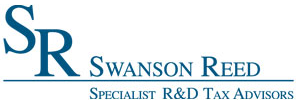Maine R&D Tax Credit Filing Instructions
To claim the Research Expense Tax Credit in Maine, businesses generally need to follow federal guidelines for qualified research expenses as defined by Internal Revenue Code (IRC) Section 41, but only for research conducted within Maine. The credit itself is equal to 5% of qualified research expenses in excess of a base amount (the average research expense for the last three years), plus 7.5% of basic research payments. For corporations, the credit is limited to 100% of the first $25,000 in income tax liability determined before other credits, plus 75% of the tax amount exceeding $25,000. Any unused credit can be carried forward for up to 15 years. To make the state R&D tax credit claim, taxpayers must file the Maine Research Expense Tax Credit Worksheet, which is typically submitted along with their main tax return, such as Form 1120ME for corporations, or the appropriate form for pass-through entities. A copy of the federal Form 6765, “Credit for Increasing Research Activities,” and any other supporting documentation must be provided with the Maine tax return.
Maine Patent of the Year – 2024/2025
Running Tide Technologies Inc. has been awarded the 2024/2025 Patent of the Year for their innovative approach to ocean-based carbon removal. Their invention, detailed in U.S. Patent No. 11899004, titled ‘Systems and methods for monitoring ocean-based carbon dioxide removal devices and accumulation of a target product’, introduces a novel system designed to enhance the efficiency and effectiveness of carbon sequestration in marine environments.
Running Tide Technologies has developed a system that integrates passive substrates seeded with target products, such as algae, into ocean ecosystems. These substrates are equipped with sensors that monitor key characteristics of the target product, providing real-time data on biomass accumulation and carbon sequestration potential. The system’s design allows for the passive substrates to transition from a positively buoyant state to a negatively buoyant state, enabling them to sink and sequester carbon at deeper ocean levels.
This innovative approach addresses the growing need for scalable and verifiable carbon removal solutions. By combining marine biology with advanced sensor technology, Running Tide’s system offers a promising method for mitigating climate change. The ability to monitor and quantify carbon sequestration in real-time enhances the credibility and effectiveness of ocean-based carbon removal strategies, positioning Running Tide at the forefront of environmental innovation.
Study Case
Natural Glow produces quality organic skincare made of the purest ingredients direct from distillers and growers around the world. The company continuously improves its existing ingredients through researching new filtration methods and extraction processes for aromatherapy and skin care. The company uses base ingredients as well as aromatherapy oils to ensure the therapeutic value, safety for use and appeal to users.
Due to the nature of its work, Natural Glow constantly performs R&D activities. For this particular project, Natural Glow believed that new products could be developed by reformulating existing ingredients on the condition that sufficient research and testing was performed to ensure that the products were safe for human use while meeting all the appropriate expectations.
To qualify for the Research and Experimentation Tax Credit, Natural Glow had to make sure its “qualified research” met four main criteria, known and developed by Congress as The Four-Part Test. After self-assessing, Natural Glow declared the following experiments as R&D work.
Design and development of a series of prototypes to achieve the technical objectives (design and development of the new product range).
The hypothesis for this experiment stated that designing, testing and evaluating various concepts would contribute to a more efficient and effective prototype testing phase.
Natural Glow conducted multiple experiments to try and create top-of-the-line products. It then concluded that such a design was feasible, but needed to be prototyped and fully tested to prove the hypothesis.
Trials and analysis of data to achieve results that can be reproduced to a satisfactory standard and to test the hypothesis (prototype development and testing of the new product range).
Natural Glow’s hypothesis for this phase of experimentation was that developing and implementing various designed components would allow refinement and tweaking of the final result to achieve the objectives of the project.
Natural Glow’s testing proved that the theoretical conclusions from the design phase could be realized through prototype development and related tests. The new knowledge generated would be used for further iterations of design and development and further field testing.
Background research to evaluate current knowledge gaps and determine feasibility (background research for the new product range).
Natural Glow’s background research included:
- Literature search and review.
- Field trips to India and Greece to locate, source and conduct preliminary testing of potential ingredients; to analyze competitors.
- Analysis of consumer behavior and wants (i.e. anti-aging).
- Consultation with industry professionals and potential customers to determine the level of interest and commercial feasibility of such a project.
- Preliminary equipment and resources review with respect to capacity, performance and suitability for the project.
- Consultation with key component/part/assembly suppliers to determine the factors they considered important in the design, and to gain an understanding of how the design needed to be structured accordingly.
The activities conducted in the background research were necessary because they assisted in identifying the key elements of the research project, therefore qualifying as R&D.
Ongoing analysis of customer or user feedback to improve the prototype design (feedback R&D of the new product range).
Natural Glows’ qualifying R&D activities included:
- Ongoing analysis and testing to improve the efficiency and safety of the project.
- Ongoing development and modification to interpret the experimental results and draw conclusions that served as starting points for the development of new hypotheses.
- Commercial analysis and functionality review.
- Consumer trials and feedback.
- Industry evaluations.
These activities were necessary to evaluate the performance capabilities of the new design in the field and to improve any flaws.
Qualified research consists of research for the intent of developing new or improved business components. A business component is defined as any product, process, technique, invention, formula, or computer software that the taxpayer intends to hold for sale, lease, license, or actual use in the taxpayer’s trade or business.
The Four-Part Test
Activities that are eligible for the R&D Credit are described in the “Four-Part Test” which must be met for the activity to qualify as R&D.
- Permitted Purpose: The purpose of the activity or project must be to create new (or improve existing) functionality, performance, reliability, or quality of a business component.
- Elimination of Uncertainty: The taxpayer must intend to discover information that would eliminate uncertainty concerning the development or improvement of the business component. Uncertainty exists if the information available to the taxpayer does not establish the capability of development or improvement, method of development or improvement, or the appropriateness of the business component’s design.
- Process of Experimentation: The taxpayer must undergo a systematic process designed to evaluate one or more alternatives to achieve a result where the capability or the method of achieving that result, or the appropriate design of that result, is uncertain at the beginning of the taxpayer’s research activities.
- Technological in Nature: The process of experimentation used to discover information must fundamentally rely on principles of hard science such as physical or biological sciences, chemistry, engineering or computer science.
What records and specific documentation did Natural Glow keep?
Similar to any tax credit or deduction, Natural Glow had to save documents that outlined what it did in its R&D activities, including experimental activities and business records to prove that the work took place in a systematic manner.
Unfortunately, the only records that Natural Glow saved were literature reviews and background research.
As a company claiming R&D, you always want to be “compliance ready” — meaning if you were audited by the IRS, you could present documentation to show the progression of your R&D work. Here are some types of documentation that would be beneficial to save:
- Project records/ lab notes
- Photographs/ videos of various stages of build/ assembly/ testing
- Prototypes
- Testing protocols
- Results or records of analysis from testing/ trial runs
- Tax invoices
- Patent application number
- Meeting notes or progress reports
An Augusta manufacturing company creating syringes for the medical industry has been claiming the R&D credit for years. The company claims R&D credits each year for the development activities of its engineers. This project involved a multi-year study.
The Company qualified for the federal R&D credit of $336,280 and an additional $45,700 in Maine state R&D Tax Credit.
| FEDERAL | MAINE | |||||
| Year | Total QREs | Credit | Total QREs | Credit | ||
| Year 4 | $1.200.000,00 | $103.600,00 | $1.200.000,00 | $14.000,00 | ||
| Year 3 | $1.050.000,00 | $101.900,00 | $1.050.000,00 | $10.500,00 | ||
| Year 2 | $850.000,00 | $82.780,00 | $850.000,00 | $11.700,00 | ||
| Year 1 | $500.000,00 | $48.000,00 | $500.000,00 | $9.500,00 | ||
| Total | $3.600.000,00 | $336.280,00 | $3.600.000,00 | $45.700,00 | ||
Choose your state


















 […]
[…] […]
[…]
